Hello!
First of all, you may notice that the format of this email is different than the last ones— I decided to switch to this Substack platform so that people can more freely subscribe and unsubscribe, and so that archives of our newsletters will be kept and available for anyone to peruse.
This summer has been a whirlwind, but the mornings have become cool and misty, and we had our first frost of the season on Halloween night. The grass has slowed down its growth, so the sheep are on their last lap around all of our grazing land to finish up what this summer provided. And wow, it provided quite a bit this year. Our summer was one rain storm after another, easily the wettest season I’ve experienced living here. July was the wettest month ever recorded in NY state, we had multiple rain storms that measured in over 4 inches in one day. Luckily we were spared from the devastating floods that hit our neighbors in Vermont, however we did struggle with our old fieldstone foundation which becomes very leaky in those intense storms.
The silver lining of all this rain is that the grass has grown exceptionally fast. We weaned the boy lambs off of their mothers in July, and they have been grazing since then with the ram. This was our first season selling whole and half lamb shares, direct to customers. We still have a few available, if anyone is looking for some meat to fill their freezer this winter. We will begin harvesting them later this month, and so far I am really pleased with their growth.
This was also the first year of selling regularly at a farmers market, which I did every Sunday in Keene Valley. It was an interesting experience—some weeks went by with no sales, and some weeks were bustling—but it gave us great local exposure, and led to many conversations with fiber and sheep people who found me. This winter I plan to go over all the sales and make a plan for next year. We have two more holiday markets that we will be at—Christmas in Essex in downtown Essex on Dec. 2, and the holiday market at the Whallonsburg Grange on Dec. 9.
The Whallonsburg Grange also runs Whitcombs—which is an art and community space right across the street. They have a wood shop, metal shop, pottery studio, gift store, and a gallery and community room. They host small gallery shows of local artist’s works, and I will be having a show of my weavings starting in the month of December. I have never displayed my weavings in a gallery context, and it has been fun to put together pieces that represent some sort of artistic arc. I feel very honored to have been asked to participate and am really looking forward to sharing more about my work with our local community.
Unfortunately, I won’t have any of my 2023 blankets to display in the show, because I am all sold out! This year I was able to make all of our blankets on my AVL production loom, which I wrote about in a previous newsletter. With more efficient production, I was able to sell all of this years blankets at lower price point, which I felt good about, and which clearly seemed to work for the market in our area. I will be getting our next batch of yarn back from the mill in January, and will pick up production again then. In the meantime, I have been spinning more handspun yarn and making more little pouches and wall hangings for our holiday sales. Taylor and I also made a batch of lamb tallow candles as an experimental new product, and I am curious if people will be interested in those. I also got our first sheepskin back from Vermont Natural Tannery, and have that available for sale. They use mimosa bark tannins to soften the hides, which is much healthier for the waste water in their process, as well as for the end user of the sheepskin. I dropped off six more skins for them to tan, and after we harvest the lambs this winter will have a lot more. One of the main reasons we are so drawn to sheep, is that they really have so much to offer us as farmers. There is obviously their wool and meat, but also skins, fat for candles, skulls and horns for buttons and decorations, bones for soups and dogs, not to mention their manure, hoof action and grazing which has been transformative to our land even in just three years of grazing. We hope to harness all of the potential products that they offer us, in order to keep this farm afloat in our modern economically driven world.
Looking ahead, we have big changes coming. Both Taylor and I are stepping away from Echo Farm, which had been our farm home before we bought our own property, and our work for the past seven years. I keep thinking about that time frame—they say that every seven years your whole body has been changed over, every cell has replicated and died at least once in that time, so the physical body that was me seven years ago is completely different than what I am composed of today. One of the many gifts of Echo Farm is abundant food—veggies, maple, dairy, meats, and we have been lucky enough to eat mostly that for the last seven years. Sure, we buy chips and wine, bananas and the occasional sub sandwich from the meat market, we go out to eat from time to time, eat at friends houses, and travel sometimes for a night or two—but there is a large chunk of all that we have consumed that came directly from the 170 acres that is Echo Farm, and that food is transformed literally, into us. So—all to say that the decision to leave is heartbreaking and life changing, but that Echo Farm is still in us, in one way or another. And I look forward to being neighbors and friends, resources and support to each other in our next chapters.
So as we move into 2024, we are both refocusing on Wollecru and excited for all the potential that is here. We are both exploring other part time work for “off farm” income, which is the modern reality of most farms. We do dream about how we could survive off of only our farms endeavors, and it is a goal to work towards. In short we would need to raise many more sheep, which would likely mean getting into long term leases with neighboring properties to graze and make hay, finding larger markets for meat—potentially more wholesale situations rather than direct to consumer, and diversifying enterprises.
One different enterprise we are trying out, is a small garden-driven nursery. I have been developing our gardens here at Wollecru for two years now, and my dream would be to have display gardens that can inspire people to try new things at their own properties. In order to supply myself with plants, we have been developing nursery beds, stock plants, and propagation systems, and the surplus will all be for sale. This summer my dad helped us take down a small hoop house frame from an elderly couple in Willsboro who ran a nursery business for many years. We are setting it up as our main propagation greenhouse, and I hope to kick off the nursery by having spring seedlings for sale—standard veggies and annuals, as well as our main focus which will be garden perennials.
The grapes and apples are another branch of Wollecru—this season they unfortunately got hit by a very late freeze, which set back all the vines that had leafed out already, and froze all of the apple blossoms in full bloom. We got our first trellises up, and had about 5 clusters of grapes this year, but are expecting our first real harvest in 2024.
Somehow I’ve gotten to the end of this newsletter and failed to mention the biggest project that we undertook this summer—our new fence. We were contacted by our county Soil and Water Conservation District in the Spring, letting us know that they still had funding available for 2023 fencing projects. We weren’t expecting to be able to put up a fence so soon, but when the opportunity presented itself, we jumped on it. We began with a layout and plan, materials list and scheduled time with the county post pounder and our neighbor’s tractor. We spent three long days in mid June pounding all the posts, and then slowly but steadily took the next three months to build all the H braces and gates, stretch the lengths of woven wire, and install a hot line on both the inside and the outside—the inside line to connect our movable nets to, and to dissuade the sheep from rubbing up on the fence, and the outside line to stop coyotes from climbing up over the fence. The whole fence is about 4000’ long, and encloses roughly 13.5 acres of our main grazing areas. We finished in mid September, and got right to using it. The fence offers many benefits—most obviously some peace of mind that its hard for predators to get in, and for sheep to get out. It also gives us a hot line to connect to all around the property, whether the sheep are in the fence or grazing areas still outside of it. It cuts down on the time it takes us to fence our rotational grazing paddocks, and most exciting to us at this time of year, it allows us to bale graze the sheep in our hay fields in the beginning months of winter. Bale grazing means rolling out bales directly on the land, and allowing sheep to eat this preserved hay right in place, rather than from a hay feeder in the barn. This lets all of their manure and urine get deposited right back onto the hay fields, rather than in the barn where we’d have to scoop it out with tractors or shovels, and then spread it back on the fields later. It allows seeds from the hay to fall back into the field, reseeding potential thin spots, and it also lets the sheep have more access to the land and skies for longer in the year, which is better for their health. Once we start to have snow falls, our portable nets often get weighed down or iced in, however our permanent fence is metal and rigid, and will continue to hold the sheep in, even if we get multiple feet of snow. The fence is an amazing tool to allow us to bring fertility back onto our depleted hayfields, and hopefully increase the soil biology and plant vigor, leading to higher yields and ultimately more sheep.
So, we hope to see any of you who are local at our last holiday markets, and otherwise enjoy the coming winter and quiet season. Thank you all for your continued interest and support,
Kirsten and Taylor


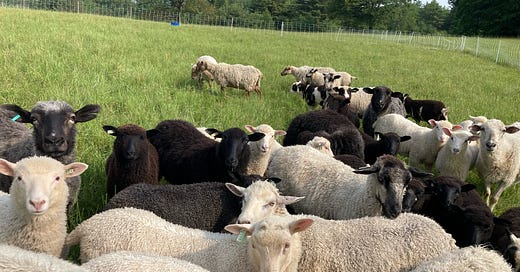


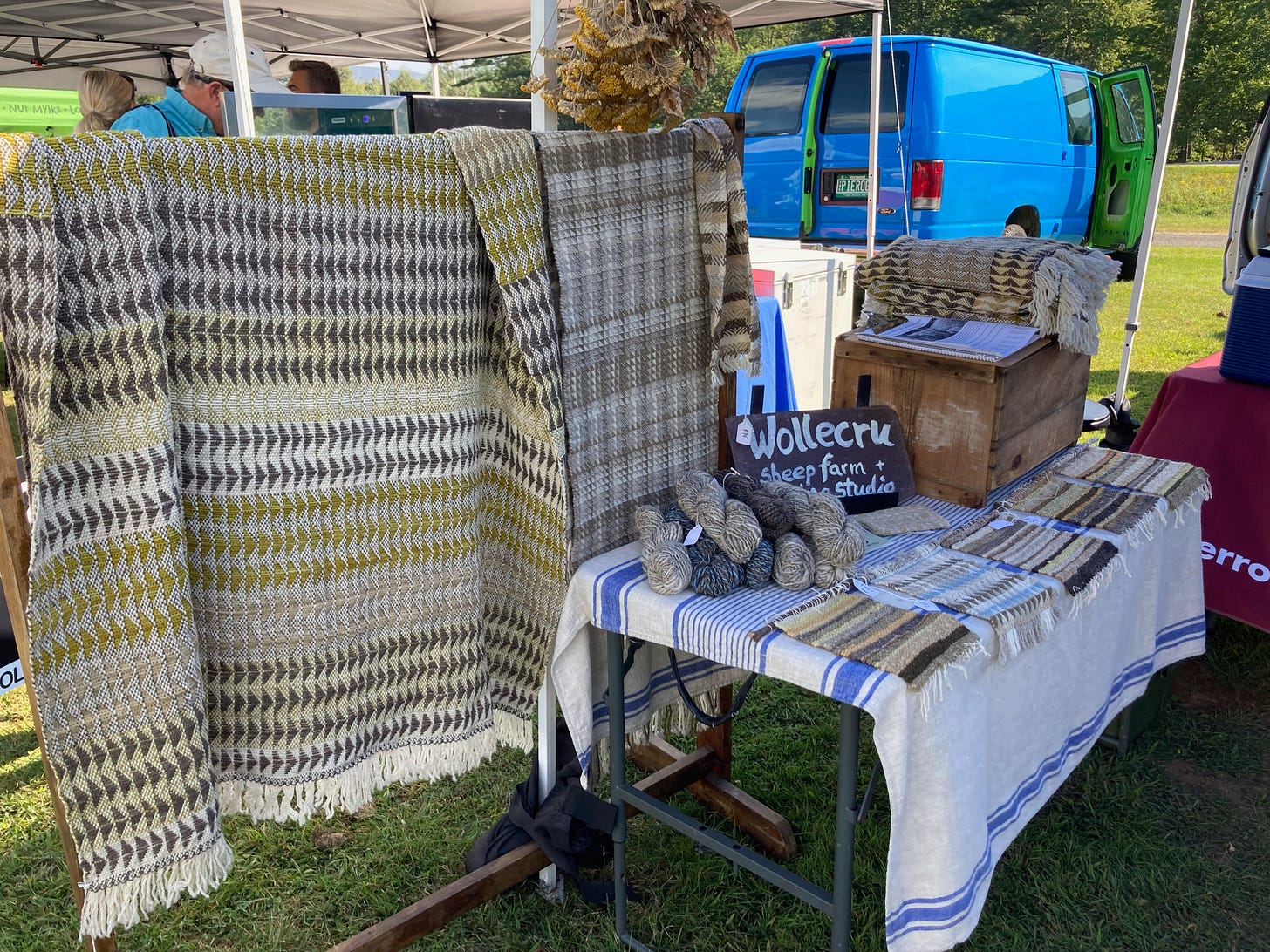
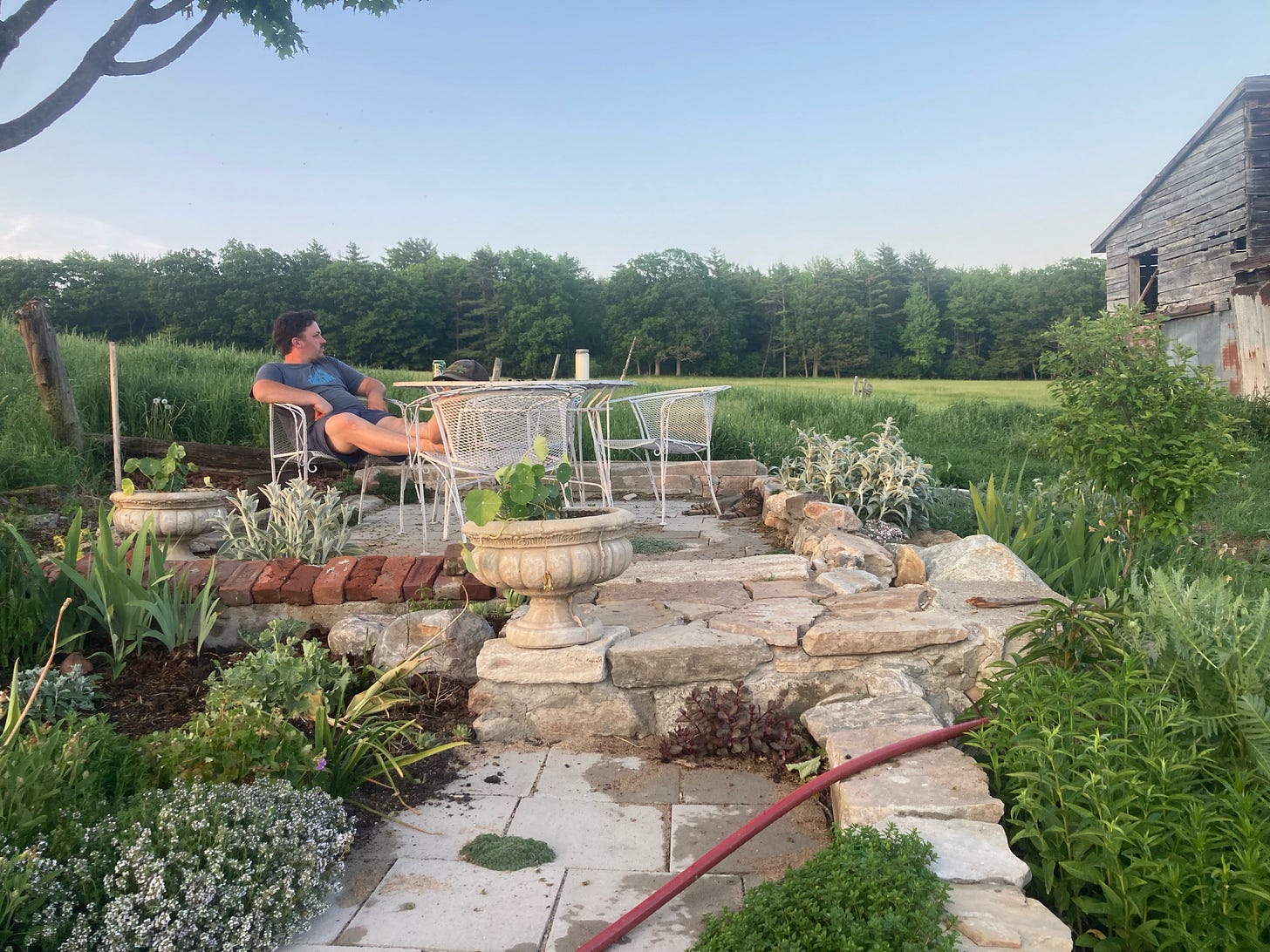
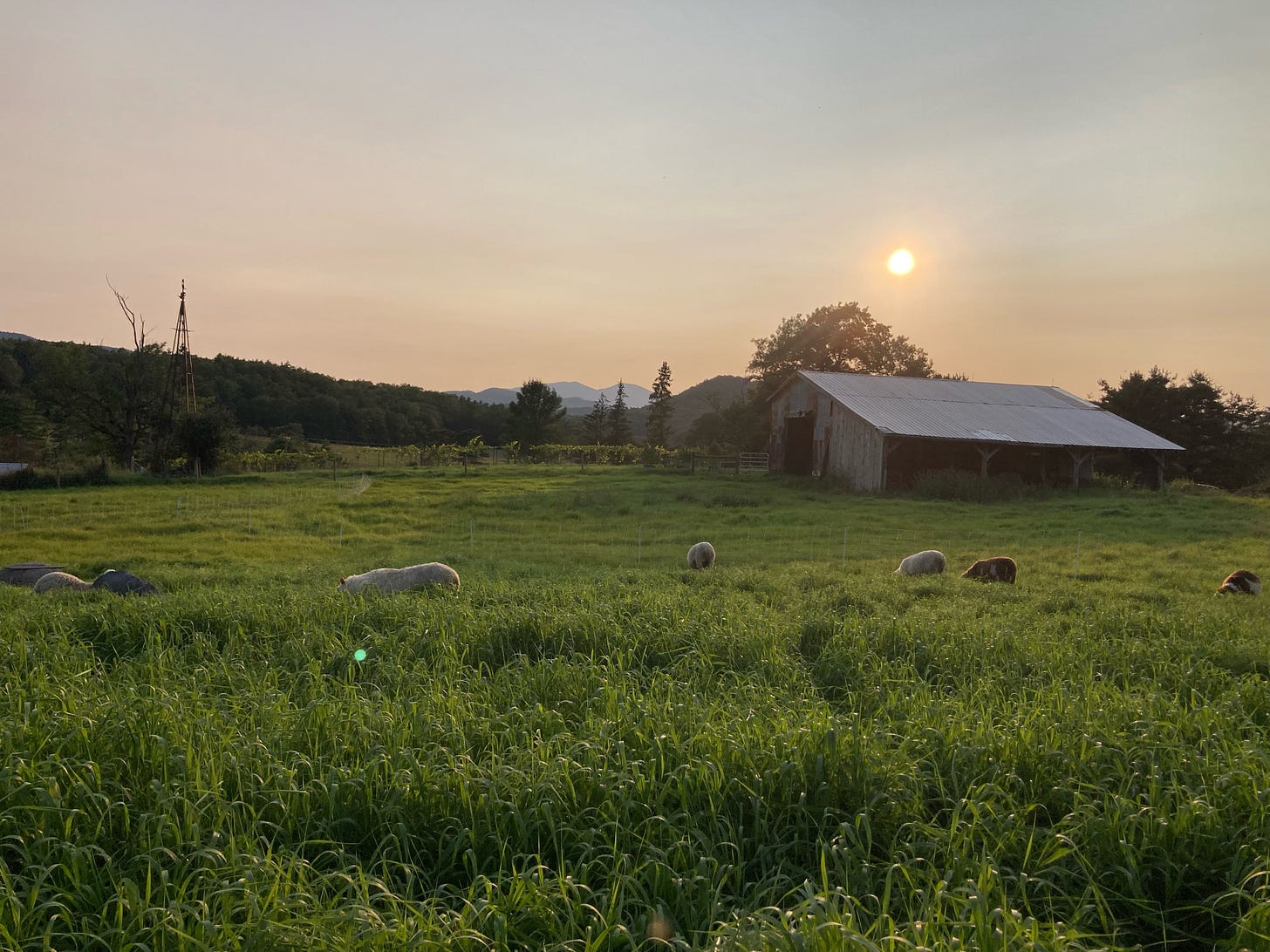
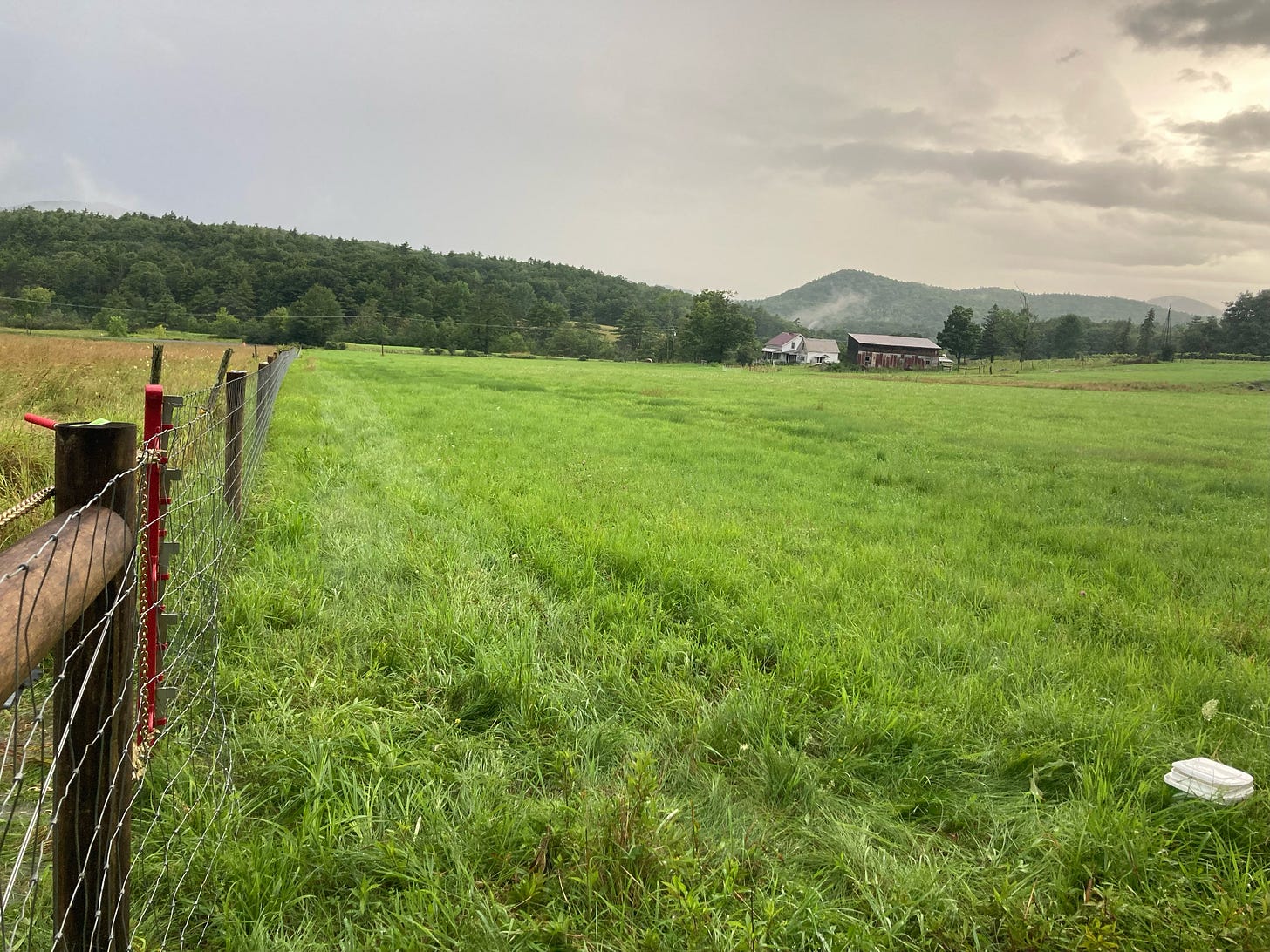
Kirsten, I enjoy reading about all the changes on your side of the lake, as you endeavor to support yourselves from your sheep and their many gifts. That fencing will bring such peace of mind! We used to raise goats and know firsthand how unreliable net fencing alone can be with winter snows. I would love to read previous newsletters from the platform you no longer use, particularly that past newsletter about your AVL loom and your weaving, since I too am a weaver. Can you send a link? (My thanks to Adam for mentioning your farm in his newsletter!) I look forward to coming over to the Whallonsburg Grange for the holiday market on the 9th and in the spring for some garden seedlings from your new nursery! Lausanne Allen